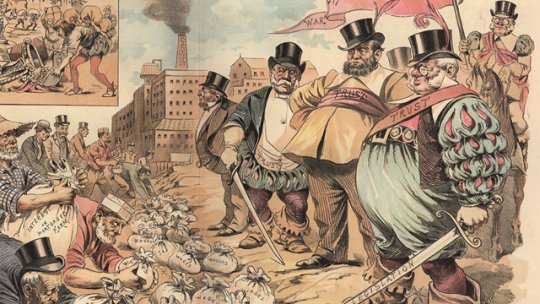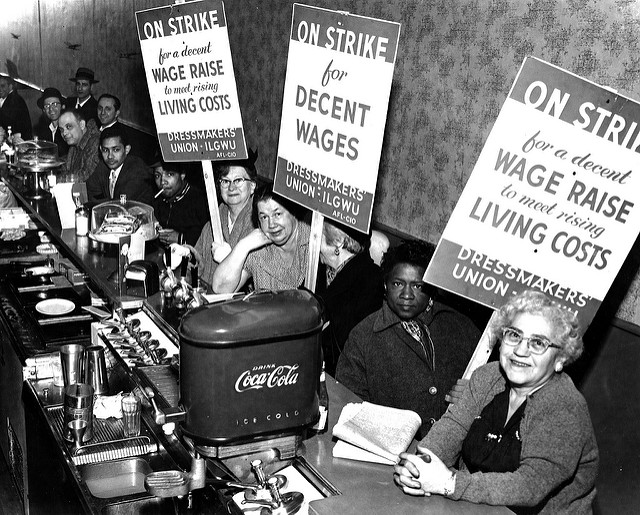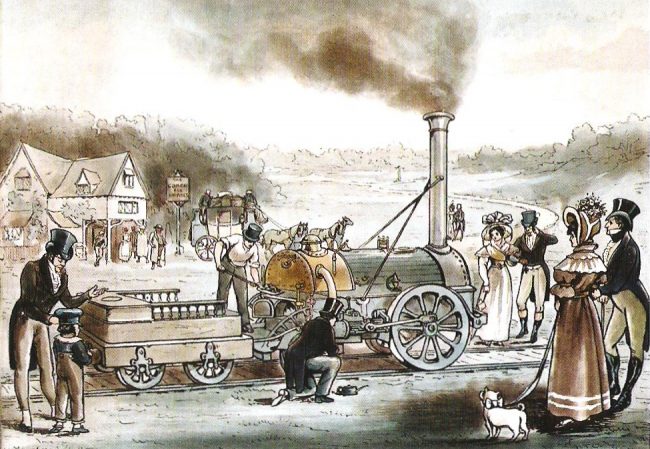The First and Second Industrial Revolution: A Time of Great Change and Upheaval
The Industrial Revolution was a period of great social and economic change that began in Great Britain in the late 1700s and spread to other parts of the world in the 1800s. It was marked by the introduction of new technologies, such as the steam engine, that led to a dramatic increase in productivity. This, in turn, led to a number of social and economic changes, including urbanization, the rise of a new middle class, and the emergence of new social problems.
One of the most significant impacts of the Industrial Revolution was urbanization. As factories were built, people flocked to cities in search of work. This led to a rapid growth in urban populations, which put a strain on resources and infrastructure. It also led to the development of new social problems, such as poverty, crime, and disease.
The Industrial Revolution also led to the rise of a new middle class. This class consisted of people who worked in businesses and professions, rather than in factories. They had more disposable income than the working class, and they began to demand new goods and services. This led to the growth of consumerism and the development of new industries, such as advertising and marketing.
The Industrial Revolution also had a significant impact on the environment. The burning of fossil fuels to power factories led to air pollution and climate change. The dumping of industrial waste into rivers and streams polluted the water supply. And the clearing of forests to make way for factories and farms destroyed habitats and contributed to soil erosion.
The Industrial Revolution was a time of great change and upheaval. It had a profound impact on society and the environment. While it brought about many benefits, it also created new problems that we still grapple with today.
Here are some additional specific impacts of the Industrial Revolution on society and history:
- The rise of capitalism: The Industrial Revolution led to the rise of capitalism, as factories and businesses began to replace small farms and workshops. This led to a new class of wealthy industrialists, who became very powerful in society.

- The decline of the aristocracy: The Industrial Revolution also led to the decline of the aristocracy, as the new middle class began to challenge their power. This was due in part to the fact that the aristocracy did not have the same access to education and technology as the middle class.
- The growth of labor unions: The Industrial Revolution also led to the growth of labor unions, as workers began to demand better working conditions and wages. This was a major challenge to the power of the industrialists, but it eventually led to improvements in the lives of workers.

- The rise of the welfare state: The Industrial Revolution also led to the rise of the welfare state, as governments began to provide social safety nets for the poor and the elderly. This was necessary to address the social problems that had arisen as a result of the Industrial Revolution, such as poverty, crime, and disease.
- The development of new technologies: The Industrial Revolution led to the development of new technologies, such as the steam engine, the telegraph, and the telephone. These technologies had a profound impact on society, by making communication and transportation faster and easier. They also led to the development of new industries, such as the automotive industry and the aerospace industry.
 The Industrial Revolution was a time of great change and upheaval. It had a profound impact on society and the environment. While it brought about many benefits, it also created new problems that we still grapple with today.
The Industrial Revolution was a time of great change and upheaval. It had a profound impact on society and the environment. While it brought about many benefits, it also created new problems that we still grapple with today.
The Second Industrial Revolution, also known as the Technological Revolution, was a period of great technological advancement that began in the late 19th century and lasted until the early 20th century. It was marked by the development of new technologies, such as the internal combustion engine, electricity, and the assembly line. These technologies led to a dramatic increase in productivity and a major transformation of society.
The Second Industrial Revolution had a significant impact on the Industrial Revolution. The new technologies made it possible to produce goods more efficiently and cheaply, which led to a decrease in the cost of goods and an increase in demand. This, in turn, led to further growth in the industrial sector and the development of new industries, such as the automobile industry and the aerospace industry.
The Second Industrial Revolution also had a major impact on society. The new technologies led to the growth of cities, as people flocked to urban areas in search of work. This led to a number of social problems, such as poverty, crime, and disease. However, it also led to the development of new social movements, such as the labor movement and the women's suffrage movement.
The Second Industrial Revolution was a time of great change and upheaval. It had a profound impact on society and the environment. While it brought about many benefits, it also created new problems that we still grapple with today.
Here are some specific impacts of the Second Industrial Revolution on the Industrial Revolution:
- Increased productivity: The new technologies of the Second Industrial Revolution led to a dramatic increase in productivity, which meant that factories could produce more goods in less time. This led to a decrease in the cost of goods and an increase in demand.
- New industries: The new technologies of the Second Industrial Revolution led to the development of new industries, such as the automobile industry and the aerospace industry. These industries created jobs and helped to boost the economy.
- Urbanization: The new technologies of the Second Industrial Revolution led to the growth of cities, as people flocked to urban areas in search of work. This led to a number of social problems, such as poverty, crime, and disease.
- Social movements: The new technologies of the Second Industrial Revolution led to the development of new social movements, such as the labor movement and the women's suffrage movement. These movements fought for better working conditions and rights for women and other marginalized groups.
- Environmental impact: The new technologies of the Second Industrial Revolution had a significant environmental impact. The burning of fossil fuels to power factories led to air pollution and climate change. The dumping of industrial waste into rivers and streams polluted the water supply. And the clearing of forests to make way for factories and farms destroyed habitats and contributed to soil erosion.
The Second Industrial Revolution was a time of great change and upheaval. It had a profound impact on society and the environment. While it brought about many benefits, it also created new problems that we still grapple with today.

























